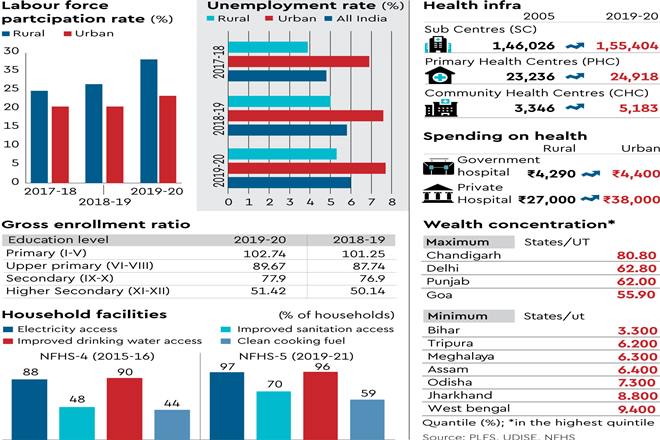ForumIAS announcing GS Foundation Program for UPSC CSE 2025-26 from 19 April. Click Here for more information.
ForumIAS Answer Writing Focus Group (AWFG) for Mains 2024 commencing from 24th June 2024. The Entrance Test for the program will be held on 28th April 2024 at 9 AM. To know more about the program visit: https://forumias.com/blog/awfg2024
Contents
What is the News?
The State of Inequality in India Report has been released.
What is the State of Inequality in India Report?
Released by: Economic Advisory Council to the Prime Minister(EAC-PM) and written by the Institute for Competitiveness.
Purpose: The report presents a holistic analysis of the depth and nature of inequality in India. It compiles information on inequities across sectors of health, education, household characteristics and the labour market.
Focus Areas: The report looks at five key areas that influence the nature and experience of inequality. These are 1) income distribution, 2) labour market dynamics, 3) health, 4) education and 5) household characteristics.
Source of Data: The report is based on the data derived from various rounds of the Periodic Labour Force Survey (PLFS), National Family and Health Survey (NFHS) and UDISE+.
What are the key findings of the report?

Income Inequality: The share of the top 1% accounts for 6-7% of the total incomes earned while the top 10% accounts for one-third of all incomes earned. For instance, the salary of Rs 25,000 is already amongst the top 10% of total incomes earned.
Employment Categories: In 2019-20, among different employment categories, the highest percentage was self-employed workers followed by regular salaried workers and casual workers. The share of self-employed workers also happens to be the highest in the lowest income categories.
Unemployment Rate: The country’s unemployment rate is 4.8% (2019-20), and the worker population ratio is 46.8%.
Education Infrastructure: Till 2019-20, 95% of schools have functional toilet facilities on the school premises and 80.16% of schools have functional electricity connections.
Health Infrastructure: There has been a considerable improvement in increasing the health Infrastructural capacity with a targeted focus on rural areas.
– For instance, the results of NFHS-4 (2015-16) and NFHS-5 (2019-21) have shown that 58.6% of women received antenatal check-ups in the first trimester in 2015-16, which increased to 70% by 2019-21.
The Gross Enrolment Ratio has increased between 2018-19 and 2019-20 at the primary, upper primary, secondary and higher secondary.
Household Conditions: According to NFHS-5 (2019-21), 97% of households have electricity access, 70% have improved access to sanitation, and 96% have access to safe drinking water.
What are the recommendations given by the report?
a) Government should come out with a guaranteed employment scheme to create jobs for the urban unemployed, b) A universal basic income should be introduced, c) Higher funds should be allocated towards the social sector to reduce inequality in India.
Source: The post is based on the article “The State of Inequality in India Report released” published in PIB on 18th May 2022.




